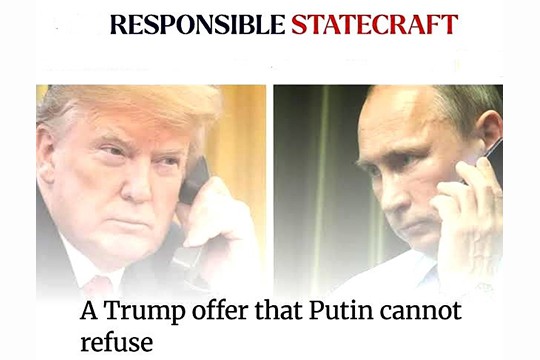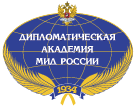Along Ukraine’s eastern frontline, the question is not if Russia will gain full control of Pokrovsk, a key location on Ukraine’s “fortress belt.” |The city’s collapse will be a strategic loss for Ukraine and a tactical win for Russia, but it won’t bring an end to the war closer, notes Dr. Jennifer Kavanagh, a senior fellow and director of military analysis at Defense Priorities.
For the Trump administration, this is bad news. The slim window of opportunity it had for simply walking away from Ukraine, no strings attached, has closed and now bilateral diplomacy with Russia is stalled. Though President Donald Trump insists that this is still “Biden’s war,” almost a year into his term, he will certainly own the consequences of the conflict’s eventual end — good or bad.
Washington will need a new strategy, however, if it hopes to salvage its efforts to achieve peace. The starting point for this new strategy must be an acceptance that there is no amount of pressure that will drive Russian President Vladimir Putin to stop the war before he has minimally achieved his objectives. Instead, President Trump’s best shot at reaching a deal would leverage his strongest card: the fact that Putin needs U.S. involvement to achieve his political objectives and cares so much more about the details of a settlement than the U.S. president.
In many ways, the battle for Pokrovsk has become a microcosm of the war itself and the difficulty of resolving the nearly four-year old conflict. Despite the fighting’s toll, neither side seems prepared to lay down its weapons, but their reasons could not be more different.
Moscow’s unwillingness to back down is a sign of resolve and a reminder that Russia is largely impervious to Western-imposed and battlefield costs. Believing that he has the military advantage, Putin has responded to Trump’s calls for peace with escalation, pressing forward where Ukraine’s defenses appear on the verge of collapse. The losses from this strategy are high but sustainable and acceptable given the stakes of the war’s outcome for Putin.
On the other hand Kyiv’s stubbornness is a sign of weakness, not strength. Ukraine’s leaders recognize that the country needs a ceasefire, but fear what comes after accepting it.
In the eyes of many Ukrainians, any peace deal achieved with Russia now will be temporary. Rightly or wrongly, they believe that Putin will not be satisfied until Russia controls all of Ukraine. Today’s choice is not, therefore, between peace and more war, but between fighting Russia now and fighting Russia later. Facing this dilemma, Kyiv has chosen a slow battlefield loss over a quick capitulation. This is an understandable but dangerous strategy, however, that places the country’s survival on a knife edge.
Across Europe, there is little appetite for a rapid end to the conflict in Ukraine despite performative calls for an unconditional ceasefire. Europe’s entreaties to keep Ukraine in the fight may be cloaked in the language of justice and fairness, but they are driven just as much by pragmatism as they are by values.
First, a longer war buys Europe time for its own military build-up. As long as Russia is fighting in Ukraine, its ability to threaten NATO territory is limited. But after the war ends, many in Europe believe Russia will reconstitute its military and turn its attentions further west. Second, Europe’s leaders know that once weapons in Ukraine fall silent, they will have to figure out how to make good on their post-war promises to fund Ukraine’s reconstruction and institutionalize its ties to Europe.
Trump has good reasons to be fed up with failed efforts in Ukraine. But this would be the worst possible time for him to disengage. That said, to jumpstart diplomatic progress a new strategy is needed, one that uses carrots not sticks to change Putin’s calculus.
President Trump’s strongest point of leverage is that he cares much less about the actual terms of an armistice than does his Russian counterpart. For Trump, any outcome that stops the fighting is sufficient. Putin, on the other hand, cares very much about the details and needs U.S. involvement to end the war on favorable terms. Russia can certainly achieve its military goals without U.S. participation, for example by seizing the rest of the Donbas by force.
On both sides of the Atlantic, calls for “more pressure on Moscow” continue. This has been and will continue to be a losing strategy. Trump should dare to try something different.
read more in our Telegram-channel https://t.me/The_International_Affairs

 11:25 21.11.2025 •
11:25 21.11.2025 •























